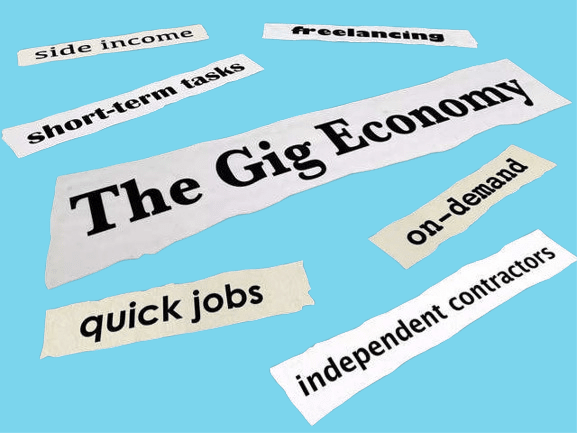The gig economy has profoundly reshaped the landscape of work, particularly for delivery app riders. While it has brought flexibility and convenience to both workers and consumers, it has also ushered in a host of challenges and consequences, many of which center around working conditions and pay.
One significant consequence is the erosion of traditional employment protections and benefits. Delivery app riders are often classified as independent contractors rather than employees, which means they are not entitled to minimum wage, overtime pay, health insurance, or other benefits typically provided by employers. This lack of basic protections leaves riders vulnerable to exploitation and financial instability.
Moreover
The gig economy's reliance on algorithms and rating systems can exacerbate the precarious nature of delivery work. Riders may face pressure to accept low-paying jobs or work long hours in order to maintain high ratings and access to more lucrative opportunities. This can lead to a cycle of overwork and underpayment, with little recourse for riders to negotiate fair compensation or challenge algorithmic decisions.
Additionally
The gig economy model can contribute to the normalization of low wages and unstable work arrangements across the broader labor market. As more companies adopt gig-like structures, traditional employment relationships are increasingly replaced by short-term contracts and freelance gigs, driving down wages and undermining job security for workers in various industries.
Furthermore
The gig economy can exacerbate inequalities within the workforce. Delivery app riders are often disproportionately drawn from marginalized communities, including immigrants and low-income individuals who may lack alternative employment options. These workers may face additional barriers to accessing legal protections and advocacy resources, further entrenching their precarious position within the gig economy.
Overall
While the gig economy offers convenience and flexibility for consumers and workers alike, its consequences for the working conditions and pay of delivery app riders are significant and multifaceted. Addressing these challenges will require a concerted effort from policymakers, companies, and civil society to ensure that all workers are afforded dignity, fairness, and security in the modern labor market.
Unveiling the Potential: AU Small Finance Bank Shares
Frequently Asked Questions about the Gig Economy and Delivery App Riders:
1. What is the gig economy, and how does it relate to delivery app riders?
The gig economy refers to a labor market characterized by short-term, flexible work arrangements, often facilitated by digital platforms. Delivery app riders are a prominent example of workers in the gig economy, providing on-demand delivery services through smartphone applications.
2. What are the typical working conditions for delivery app riders?
Working conditions for delivery app riders can vary, but common aspects include irregular hours, exposure to weather conditions, and physical demands associated with riding a bicycle or motorcycle for extended periods. Additionally, riders may face safety concerns related to traffic and interactions with customers.
3. How are delivery app riders compensated?
Delivery app riders are typically paid per delivery or per hour worked, with earnings varying based on factors such as distance traveled, order volume, and time of day. However, many riders are classified as independent contractors, meaning they are not entitled to traditional employment benefits such as minimum wage, overtime pay, or health insurance.
4. What are some challenges faced by delivery app riders in the gig economy?
Delivery app riders often encounter challenges such as low wages, lack of job security, and limited access to benefits and protections typically afforded to employees. Additionally, the reliance on algorithmic decision-making and rating systems can introduce pressure to accept low-paying jobs or work long hours to maintain high ratings.
5. Are there efforts to improve the working conditions and pay of delivery app riders?
Yes, various stakeholders including policymakers, advocacy groups, and worker organizations are actively working to address the challenges faced by delivery app riders. This includes initiatives to advocate for fair wages, better working conditions, and stronger legal protections for gig economy workers.
6. How can consumers support delivery app riders?
Consumers can support delivery app riders by tipping generously, providing positive feedback for good service, and advocating for policies that promote fair treatment and compensation for gig economy workers. Additionally, choosing platforms that prioritize worker rights and ethical business practices can make a positive impact.
7. What are the broader implications of the gig economy on the labor market?
The gig economy has significant implications for the broader labor market, including the normalization of precarious work arrangements, erosion of traditional employment protections, and widening inequalities among workers. Addressing these implications requires a comprehensive approach involving stakeholders at various levels.
8. Where can I learn more about the gig economy and delivery app riders?
There are many resources available online, including research studies, news articles, and advocacy organizations dedicated to understanding and improving conditions for gig economy workers. Additionally, following discussions on social media platforms and participating in community events can provide valuable insights and opportunities for engagement.






